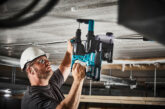
Paul Dawson, Niglon’s Commercial Director, explains why he’s calling on the electrical industry to interrogate claims of product quality further, and why reputable manufacturers will always prove their worth.
When electrical components are being made and sold, they’re ultimately going to be installed within homes and businesses. The people who live in, work in or visit those buildings are trusting that those products are safe, and rightfully so. Yet, worryingly, at Niglon we’re seeing that some of those people are being left vulnerable because of untested components.
The consequences are terrible should one of these products fail – right up to and including the risk of mass fatalities. We’ve already sadly seen the impact of electrical equipment failure in recent times with the Grenfell Tower fire which tragically claimed the life of 72 people and was deemed likely by experts to have started due to faulty wiring in an appliance.
For this reason it’s all the more concerning that we’re seeing a number of circuit protection products being sold which haven’t been independently tested by a reputable third party. And that’s why we’re calling on the entire industry to take responsibility for the safety of end users!
A whole market message
It’s vitally important that all elements of the electrical supply chain – from suppliers and wholesalers to electrical contractors and installer – don’t just assume that the onus is on the manufacturer. Every single individual involved in a component’s sale or installation has a legal duty, as well as a moral obligation, when it comes to safety.
And it’s not just about championing third-party independent testing as standard for these important devices; it’s also key to have total transparency around which products have been tested to this standard.
One idea that we believe could be introduced to stimulate this culture change is for it to become standard protocol for proof of certification to be requested EVERY time a new product is sold to a wholesaler or contractor.
Circuit protection devices should be clearly marked, online and in brochures, so the reader knows exactly which organisations/bodies they’ve been tested by (SEMKO, VDE or TUV, for example) and then proof of that certification should be made available, if requested.
If adopted across the industry, we believe this process would drive standards up and ensure wholesalers could buy in confidence from suppliers, with this product safety reassurance being passed down the supply chain to contractors and end users.
You can’t leave things to chance
Let’s be clear, this isn’t something which can, or should, be left to chance; you have no way of predicting when a substandard is likely to fail, and it should never be a case of doing nothing until something eventually goes wrong – especially when this risk can be eliminated with proper testing.
Individuals and businesses rely on contractors to install electrical devices in their properties, and they place a great deal of trust that those devices are safe. With so many products out there that still fail to carry third-party certification, it’s surely only a matter of time before there are devastating consequences.
The industry needs to act now to ensure that the process of third-party testing and producing proof of certification becomes a matter of course, rather than the exception to the rule.









